“Approach a problem fearlessly”
Now an instructor, former summer student David Schoppik revisits BSI
August 30, 2017

Interview by Carmen Chan, BSI Research Scientist
Photo credits: BSPO
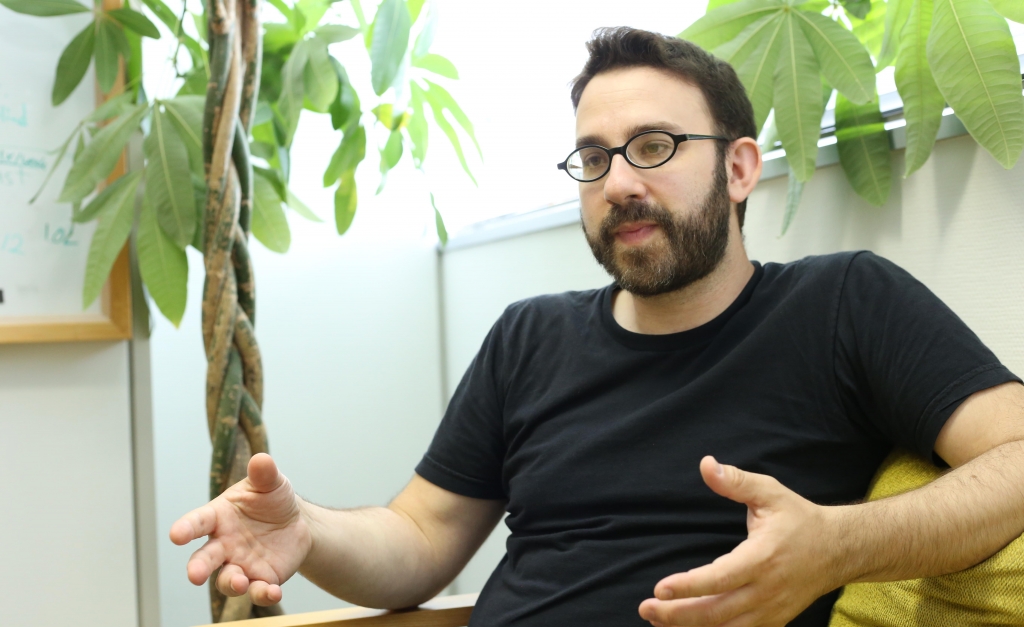
In terms of appearance, zebrafish and humans couldn’t be more different. But I recently learned that the vestibular system, which controls the sense of balance and spatial orientation, is extremely similar in these two species. The vestibulo-ocular reflex, for example, directs eye movements to ensure that we maintain stable images on the retina even when we, or the environment we find ourselves in, move. This important reflex is exceptionally conserved among animals–the same basic neural circuit, the same inputs from the same kind of inner ear sensors, the same output to the motor neurons in the brainstem, the same six eye muscles organized in the same orientation. One important difference, however, is that the zebrafish has about 200 neurons dedicated to this reflex compared to the more than 20,000 vestibular neurons found in humans. This makes the zebrafish an excellent model to answer important questions of how neural circuits work together, or sometimes break down.
I learned all this from Dr. David Schoppik of New York University School of Medicine, who lectured at RIKEN in July as part of the Brain Science Institute’s Summer Program. Though David is American, this was kind of a homecoming for him, as he attended the same program in 2003 when he was a graduate student. And now, 14 years later, he is a principal investigator running his own lab. I talked with him about his career path, advice to students and the tinkering and presentation skills that can help young scientists along the way.
In science, there is room for a lot of different styles
and many different ways to succeed
Carmen Chan: You are faculty at NYU, where you first studied. How did you circle back around and what happened in between?
David Schoppik: I did my undergraduate degree at New York University, then spent two years as a technician at the National Institutes of Health, which is an environment quite similar to RIKEN, whose staff also consists mostly of postdocs and technicians.
For my PhD, I was in Dr. Stephen Lisberger’s laboratory, studying eye movements. Eye movements are an indicator of what the brain is doing, or to put it in a slightly different way, eye tracking experiments allow us to use one aspect of animal behavior to infer what the brain must be doing. For example, in order to track a fast-moving object across the visual field, there is an inherent problem – there is a time delay (~150 milliseconds) between the photoreceptors activating to the time that your eyes can move. If your brain did not do any adjustment or computation, by the time that your eyes moved, the object would already be gone, and your eyes would always be lagging behind. But we are able to track fast-moving objects. Therefore, we can infer that the brain is making a prediction of where the target is going to be next.
In this lab, I met Justin Gardner, a more senior graduate student. He was the one who highly recommended that I come to RIKEN and join the summer program, which I did.
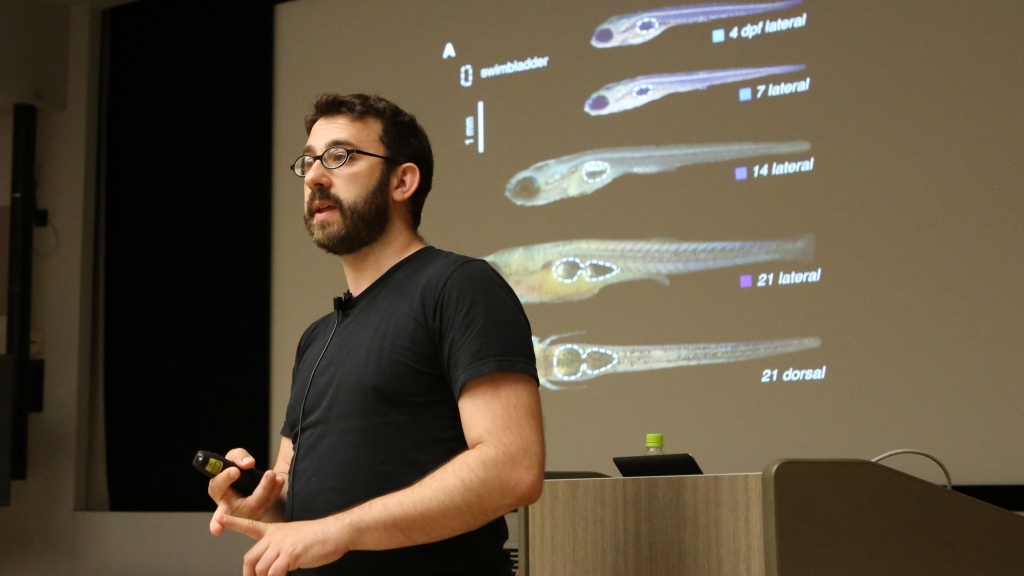
David Schoppik speaking at the BSI Summer Program 2017
After my PhD, I wanted to study a new animal. I got very excited about the zebrafish, and thought that would be a lot of fun. I found myself in Alexander Schier’s lab. He was a developmental biologist, not a neuroscientist by training. I spent the first two years intensely catching up on lab techniques. It was legitimately difficult. I had no idea what I was getting into. There was an undergraduate who had been in the lab for one and a half years, and it took him the longest time to understand how I could be so stupid and not know anything and still have graduated from my PhD. I had no shame and would just ask him and my other colleagues anything that I didn’t know. Looking back, it was very helpful to have done this, and to know that I can do it, and can teach somebody else, too.
During these postdoc years, I also learned how to generate transgenic fish. Unlike mouse and Drosophila, there was no standardized way to make transgenic lines, and this was before any genome editing technologies became available. The screening, oh my… I have done so much screening for the correct label. In the end, I’d made transgenic fish lines that have some of their neurons labeled, and some of the labeled neurons were near the ear. I knew from past work that they could be the vestibular neurons that transmit peripheral information from the inner ear sensors to the neurons that move the eyes.
So now I was so excited, because I knew what behavior to study, and had a molecular handle on the neurons responsible for that behavior. I knew I could make real progress. I went on to develop equipment that allowed me to give the fish the sensation of diving and surfacing and to study the eye movements that they made in response.
Armed with these techniques, specialties and knowledge, and studying an animal model that could answer important questions, I was able to get a position at NYU School of Medicine.
CC: What advice would you give to students and postdocs?
DS: Choose an advisor wisely, because it is very hard to switch once you have made that commitment. I think it is reasonable to ask potential supervisors, ‘I would like to expand my network, visit another country, and here are the reasons why…’ You can use their responses to judge if you would really want to go into that lab. I have been lucky enough to work with people who appreciate that I am a mature adult able to make decisions on how I spend my time. You need to find an advisor that values that. Something that I cannot stress enough is how precious time is. I did not fully appreciate it until I had kids. I became much more selective as to how I spent my time, and became more focused on finishing projects. The currency of science is papers. The way that we demonstrate our productivity is by producing papers.
The best thing that anyone has ever told me is to set the time limit before the start of a project, and have a clear goal. It is important to be able to recognize that things are working, and just as importantly, be able to recognize that things are not working. If you do not meet the goal in the set time limit, then it is time to move on.
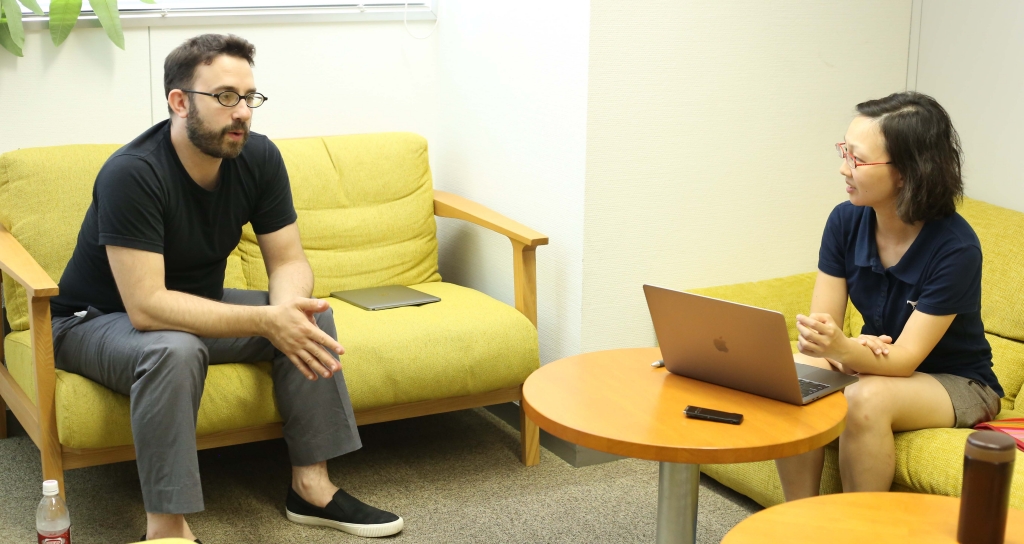
Another very important aspect of research is the power of collaboration. It really opens new doors. For example, the SCAPE microscope that I talked about in my presentation was built with our collaborator, Elizabeth Hillman. She has always been working with innovative optics, she is very supportive, very creative, and it was a real pleasure to get to work with her. And within NYU, we collaborate with Jeremy Dasen. Even before joining NYU, I knew of and really admired his work, and thought it would be great to find some way to work with him. He does very elegant, creative experiments that have illuminated our understanding of the transcription factors that govern motor neuron development, how to build the spinal cord and control different sets of forelimb, hindlimb muscles. We would go to lunch together and brainstorm. It is absolutely vital for young people to build a network of researchers, and actually the RIKEN summer program is an excellent opportunity for that.
As for choosing a research topic, one of the beauties of science is that it is a very big tent, there is room for a lot of different styles and many different ways to succeed. There are scientists who approach science as athletes. Everyone can see where the finish line is, and the way to win is that you just have to run faster than everybody else. The important thing here is that the goal is very clear, and you can easily define a hypothesis for that sort of experiment.
Other kinds of scientists are more like gatherers. They will go and look around some place where you don’t necessarily see a goal, but they know it is a rich environment. They go about turning over rocks. Maybe they will find a diamond, maybe they find a worm, and maybe they come back with nothing but dirt on their hands. It is less about having a hypothesis that everyone else can see. It is more about proposing an experiment where you learn something whether you succeed or fail. That is very difficult.
CC: How was your experience at RIKEN and how did it influence you?
DS: I was in Dr. Manabu Tanifuji’s laboratory, working on monkey vision studies. The first thing that I remember, the thing that made the whole experience so very positive, was how kind everybody was. Since I worked on monkeys, it involved a lot of work, and a lot of people. Everyone was so kind, and so engaged and helpful.
One of the best things about the Tanifuji lab is the question that they are asking, and how they are asking it is probably better than anybody else in the world. They are working on something that people have recently made a lot of progress on in terms of technological development, but we still do not fully understand how the brain does it: object recognition. If you show a human a face, the human brain recognizes it very easily. But if you give the computer the same visual information, it would look completely different to the computer and it would hardly make any sense. But in that lab, I learned that the information could be broken down into a simpler universe of problems that were manageable.
The second thing is, there was a fearlessness about technology in that lab. For example, voltage-sensitive dye imaging in the macaque monkey. Nobody else was doing that. I am sure that my own fearlessness to build whatever is needed to answer important questions came from that lab. When I visited the Tanifuji lab again this time [in 2017], the spirit, the attitude, is still there, that has not changed at all.
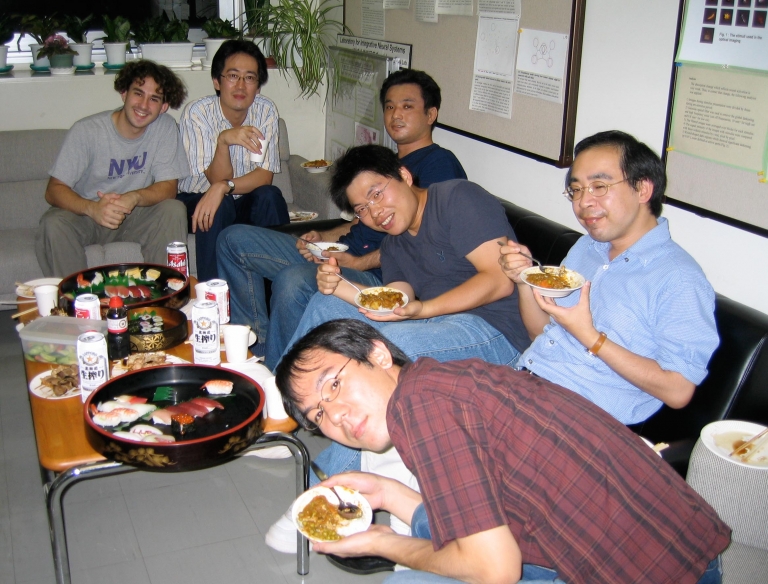
David and Tanifuji lab members in 2003
I like to build things, but the idea that you could run a lab that way, that you really could have a question that drove you, and just push the technology into service of answering that question, is something I admire.
Yet another important skill I took away with me that summer was Dr. John Maunsell’s presentation skills. He was one of the instructors that year. I like to watch different people give talks. Dr. Maunsell gave one of the best talks that I have ever seen. It was so lucid and so clear. Each slide had only one figure, and each figure only one panel or one axis. One idea, one slide, one axis and they all flowed. There was no text on any of his slides, except to either state the question or the key point.
CC: Would you recommend the RIKEN BSI Summer Program to your own students and other young scientists?
DS: Definitely. The BSI brand carries weight with me. The summer lecture course program and the internship program are important in exposing people outside Japan to what research is being done here, so they can appreciate that the research going on here is fantastic and people here publish great papers. Each student who spent the summer here is like a diplomat, who can speak with authority that people do good work here. There are top-notch, world-class labs here. Many students stand to benefit from an internship at RIKEN.
As a student, you need to have the maturity to be able to appreciate the experience and the opportunity. You need to understand that the person that stands to benefit or lose most is yourself. If you want to go away for the summer, it’s your own career that you are speeding up or slowing down. For example, perhaps you have a project that you are working on and there is a need to spend the summer at RIKEN to learn a specific technique under world experts. And by doing so, you will be bringing this technique back to your lab, and plus you will have a clear path to a richer paper. This is a very strong argument to come to RIKEN, and what supervisor would be able to say no to that?
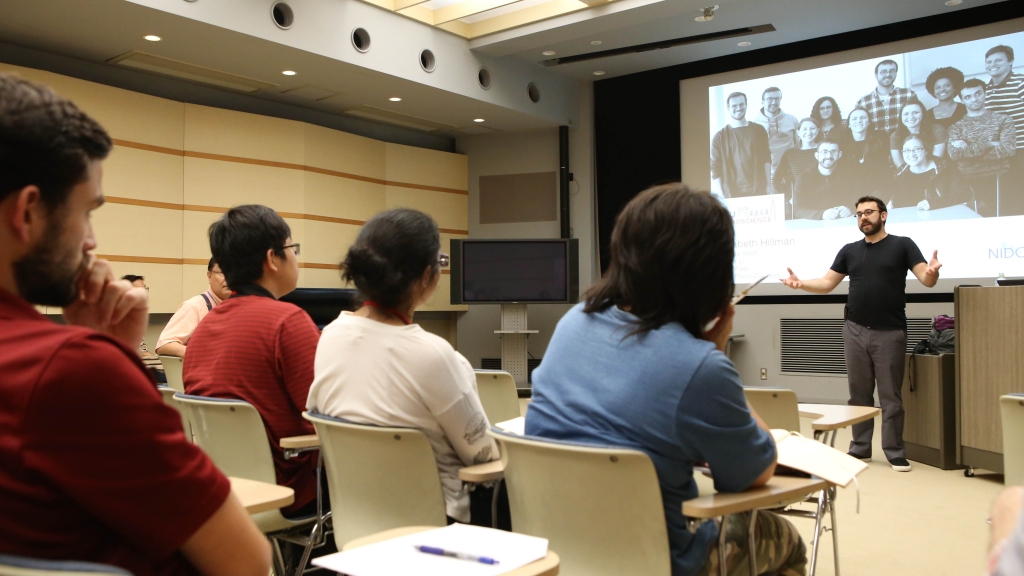
In Closing,
I had a great time talking about science and the fun experiences Dr. Schoppik had in Japan. I totally agree with him: there is no limit to the number things that a foreigner to Japan would find surprising and delightful, just because there is somebody out there who paid just a little extra attention to something that was ordinary, and transformed it.
Also, I admire how Dr. Schoppik always has one broad interest or goal in mind —to understand how the brain works. He managed to try out and get good at using different animal models, different techniques, while always circling around this one goal. I think it gives focus to his research effort and that focus is vital to a successful scientific career.
However, Dr. Schoppik said he attributed much of his achievements to luck. To me, luck of course plays an important part. But from him I learned that, in order to succeed in science, you need to have a topic you are so passionate about that it keeps you going even when faced with obstacle after obstacle. In science, these obstacles and setbacks simply never stop coming. Also, you should learn as many techniques as possible in order to answer that one question you are pursuing, and you must not forget to network and forge new collaborations along the way, all within a limited time. All this takes a certain level of maturity and wisdom and the ability to grow and evolve while being a trainee (graduate student plus postdoc). So it is luck, plus pluck!
![]() Stories from Summer Program Alumni: What I learned as a ‘brain tourist’ in Japan
Stories from Summer Program Alumni: What I learned as a ‘brain tourist’ in Japan